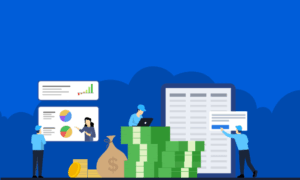Time is money. And right now, you’re potentially leaving both on the table.
At leading Gold Coast accounting firm Keypoint Accountants, we’re seeing a concerning trend: business owners waiting until June to think about tax planning. This procrastination is costing them thousands in missed opportunities.
Just ask Gold Coast entrepreneur Sarah Mitchell. Her recent tax planning session revealed an uncomfortable truth: every month of delayed tax strategy was directly impacting her bottom line. But she turned it around. And you can too.
In this comprehensive guide, you’ll discover:
- Cutting-edge digital strategies that are revolutionising tax planning
- Industry-specific opportunities you might be missing
- Practical, actionable steps you can implement today
- Case studies showing how businesses like yours are saving thousands
- Expert insights on maximising your 2025 tax position
Whether you’re running a thriving healthcare practice, managing a growing construction company, or expanding your retail presence, this guide delivers concrete strategies to reduce your 2025 tax bill.
Ready to stop leaving money on the table? Let’s dive into how successful businesses are staying ahead of the tax game!
Key Takeaways
- Start your tax planning now to maximise benefits and avoid last-minute stress
- Digital transformation can cut compliance costs significantly
- Industry-specific strategies could save thousands in tax deductions
- Early super planning could result in significant tax savings (one company saved $40,000)
- Automated tax provisioning can massively reduce end-of-year stress
- Technology integration is no longer optional – it’s essential for optimal tax outcomes
- Professional guidance early in the year can transform your tax position
The Digital Revolution in Tax Planning
Gone are the days of shuffling through shoeboxes full of receipts. James Cooper, who runs a Brisbane-based construction company, embraced this reality head-on last quarter.
“We were drowning in paperwork,” Cooper recalls. “Now, our receipts are automatically categorised, and we can track our current tax situation at any moment. It’s transformed how we manage our finances.”
Expert Tip: Cloud-based accounting systems can cut compliance costs by up to 50%, according to industry data.
The ATO’s push toward digital reporting has made technology adoption no longer optional. “We’re seeing clients significantly reduce their compliance costs by embracing the right technology,” says Chris Dobbie, Managing Director at KeyPoint Accountants. “But it’s not just about buying software – it’s about implementing it correctly and using it strategically.”
Critical Strategy #1: Asset Write-offs
Understanding the timing of asset purchases can make or break your tax position. Here’s what you need to know:
- Plan major purchases well before EOFY
- Consider financing arrangements early
- Factor in delivery and installation timeframes
Superannuation Strategies That Work
The superannuation landscape has shifted significantly in 2025. “Many business owners don’t realise the full potential of strategic super contributions,” explains Karl Halvorsen, Associate Director at KeyPoint Accountants.
Case Study: A Gold Coast construction company implemented a structured approach to super contributions, resulting in:
- $40,000 in tax savings
- Improved retirement planning for key staff
- Better employee retention rates
Pro Tip: Review your super strategy quarterly to maximise benefits and ensure compliance with current caps.
Industry Deep Dive: Sector-Specific Opportunities
Healthcare Sector
Dr Sarah Wong’s dental practice story highlights the unique opportunities in healthcare. “Medical equipment depreciation rules have changed significantly,” she notes. “Understanding these changes has helped us save substantially on our recent imaging equipment upgrade.”
Quick Win: Healthcare providers should review their equipment replacement schedule against current depreciation rules.
Construction Industry
The building boom has brought new tax considerations for tradies. “We’re seeing increased scrutiny of contractor payments,” Halvorsen warns. “Getting this wrong can be costly.”
Key considerations for construction businesses:
- Contractor payment reporting
- Equipment depreciation strategies
- Project-based accounting methods
Retail Revolution
Lisa Palmer’s retail chain demonstrates how modern tax planning intersects with operations. “We’ve integrated our point-of-sale system with our tax planning software,” she explains. “It’s given us up-to-date visibility of our tax position.”
Professional Services
For professional service firms, the focus has shifted to intellectual property and digital assets. Michael Sullivan, a Gold Coast lawyer, shares his experience: “We’ve restructured how we handle our software investments and online resources for better tax outcomes.”
Cash Flow Innovation: The New Frontier
Modern cash flow management is being enhanced by smart digital tools. “The right combination of professional expertise and technology helps businesses better plan for their tax obligations,” Dobbie explains.
Success Story: Chen’s retail business implemented automated tax provisioning, resulting in:
- large reduction in end-of-year tax stress
- Better cash flow management
- Reduced accounting costs
Implementation Tips:
- Start with a cash flow audit
- Identify tax obligation patterns
- Set up automated provisioning
- Regular monitoring and adjustments
The Technology Edge
Digital transformation isn’t just about efficiency – it’s about tax optimisation. Today’s tools offer:
Predictive Analytics
- Cash flow forecasting
- Tax liability predictions
- Opportunity identification
Up-To-Date Monitoring
- Live profit and loss report monitoring
- Instant receipt processing
- Automated categorisation
Cloud Integration
- Multi-platform synchronisation
- Remote access capabilities
- Automated backup systems
Strategic Planning for 2025-26
Looking ahead, several key changes are on the horizon. “Business owners need to prepare for evolving GST reporting requirements and digital payment systems,” Halvorsen advises.
Preparation Checklist:
- Review current systems against upcoming requirements
- Plan necessary technology upgrades
- Budget for implementation costs
- Schedule staff training
Risk Management: The Often Overlooked Aspect
Tax planning isn’t just about savings – it’s about protection. “We’re seeing increased ATO activity in certain sectors,” warns Dobbie. “Having robust systems in place is your best defence.”
Key Risk Areas:
- Documentation accuracy
- Payment timing
- Contractor classifications
- Cloud-based record keeping
Professional Support: Making It Work
For businesses feeling overwhelmed, professional guidance is crucial. KeyPoint Accountants, with over 50 years of experience serving Gold Coast businesses, offers:
- Tailored industry solutions
- Technology implementation support
- Ongoing strategic advice
- Regular compliance reviews
Action Steps for Immediate Impact
1. Technology Assessment
- Audit current systems
- Identify integration opportunities
- Plan necessary upgrades
2. Strategic Review
- Business structure evaluation
- Super strategy assessment
- Risk management review
3. Implementation Planning
- Timeline development
- Resource allocation
- Staff training schedule
The Bottom Line
For Mitchell, early planning has already shown results. “We’re seeing improvements not just in our tax position, but in our overall business efficiency,” she reports.
Next Steps
- Book a tax planning session with your accountant
- Review your current accounting technology
- Start documenting major purchase plans for 2025
- Implement automated tax provisioning
- Schedule regular strategy reviews
Remember: This article is for general information only and should not be considered financial advice. Consult with a qualified accountant for advice specific to your situation.
Read More From Techbullion



































